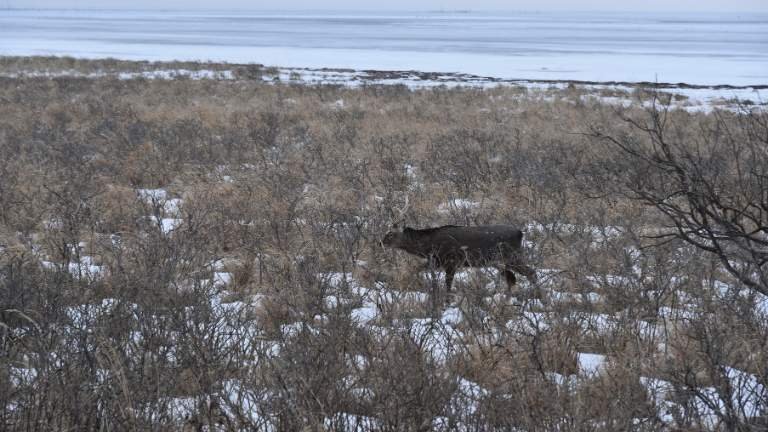As you sit in the woods, the wind is a double-edged sword—potentially your ally in concealing your presence, yet capable of becoming your foe by alerting deer to danger. You’ve felt the breeze mask your scent, but you’re left wondering when it starts doing more harm than good.
It is generally believed that deer exhibit increased activity during light winds, typically between 5-15 mph, but reduce their movements as wind speeds escalate to 15-19 mph.
However, it is important to note that wind speed alone does not solely dictate deer behavior, as factors such as breeding season, temperature, barometric pressure, and habitat conditions also play a significant role. By understanding these multifaceted aspects, hunters can optimize their chances of success by effectively navigating the intricate dynamics between wind and deer.
Even a seasoned hunter like you knows that understanding the nuances of wind can be the difference between a successful hunt and a story about the one that got away. This guide will navigate you through the invisible currents of the air, helping you gauge when the wind is an asset and when it’s a deal-breaker.
You’ll learn how to read the wind’s language and use it to your advantage, ensuring that you’re prepared for whatever gusts come your way. In the end you will understand how much wind is too much for deer hunting.
Understanding Deer Movement
To understand deer movement, you’ll need to recognize that high winds can significantly alter their natural behavior and sense of security.
As the wind affects deer, their keen sense of smell is disrupted, making it harder for them to detect predators.
Consequently, deer move less during high wind conditions, preferring to avoid the sensory chaos.
They often seek shelter and are likely to bed down on the lee side of hills or thickets, where the wind is blocked, and they can better sense danger.
Understanding this behavior is crucial for hunting, as you’ll want to consider how wind on deer movements affects their patterns and adjust your approach to where deer are likely to take refuge from gusty conditions.
Wind’s Impact on Deer Movement
The impact of wind on deer movement can vary significantly depending on various factors such as wind speed, direction, and the deer’s adaptation to strong winds. When it comes to deer hunting, understanding how wind affects deer movement is crucial for a successful hunt.
As you analyze the impact of wind on your deer hunting strategy, remember that varying wind speeds can significantly affect deer behavior and movement.
Wind speed impact analysis reveals that light breezes may encourage deer movement by providing a sense of security. However, when high winds kick in, deer tend to hunker down. They rely heavily on their senses for survival, and windy conditions disrupt their ability to hear and smell, making them more nervous.
Strong gusts can also mask your approach, but they equally make deer less predictable. It’s a complex balance – while you might think high winds offer an advantage, they often lead to erratic deer movement, challenging your ability to track and hunt effectively.
During the peak breeding season (rut), gusty winds can spread estrous scent, making bucks frantic to find its sources and increasing deer activity levels in bitterly cold conditions. On the other hand, a stiff and steady wind can make deer less likely to detect hunters approaching, providing unique opportunities to slip up on deer and fill tags.
In addition to wind speed, hunters should also assess the overall hunting conditions. This includes evaluating the safety of their hunting setup, such as tree stands or ground blinds, in high winds. Ensuring that these structures are secure and stable is essential for the safety of hunters. Furthermore, wind direction and speed can influence where deer choose to bed for the day. Understanding how the wind will impact deer bedding patterns can provide valuable insights for hunters.
Optimal Wind Speed Range for Deer Hunting
While some hunters consider wind speeds of 6-15 mph to be ideal for hunting, it is important to note that deer movement declines when wind speeds reach 15 to 19 mph.
Light winds, ranging from 5-15 mph, are often associated with increased deer movement. Bucks, for example, have been found to travel at a rate of 100 feet per hour with winds less than one mph, 115 feet per hour with winds between 1-15 mph, and 213 feet per hour with winds between 16-27 mph. These findings suggest that deer are more active in lighter winds and become less active as wind speeds increase.
In your quest for a successful deer hunt, you’ll find that mild, steady breezes often create the most favorable conditions. Moderate winds can actually work in your favor by helping mask your scent and noise, making it harder for deer to detect you. It’s crucial to understand wind direction and speed to position yourself advantageously, ideally with a steady wind blowing your scent away from the deer’s approach paths.
Hunt in areas where you’re protected from the wind to maintain stability and accuracy. Also, keep an eye on the barometric pressure; changes can influence deer behavior. Calm days with slight wind movement are prime times to capitalize on deer movement, so when the conditions align, make your move.
Strategies for Hunting in Windy Conditions
You’ll often find that hunting on windy days requires a strategic approach to effectively use the wind to your advantage. The effects of wind can make deer less likely to move, so it’s crucial to adapt your hunting strategy.
Position yourself downwind from where you expect deer to be; this helps mask your scent and reduce the chances of being detected. Since they’ll probably hunker down, patience is key. Wait for them to resume their patterns.
Hunting from the ground can be beneficial, as elevated stands might sway and creak, betraying your presence. Remember, the wind also muffles sound, so you can get closer without detection.
Lastly, it is worth noting that morning and evening hunts tend to be more successful than midday hunts in windy conditions.
By utilizing these strategies, hunters can increase their chances of success in windy conditions and make the most out of their deer hunting experience.
Windy Weather Advantages for Deer Hunting
Often, windy conditions can turn to your advantage as a hunter, making deer less alert and more approachable. Higher wind speeds disrupt a deer’s senses, which means they’re less likely to detect you. Hunting in the wind, especially when the gusts are strong, can help mask your scent and movements.
While it’s true deer move less on windy days, this can lead to them being caught off guard, presenting you with the perfect opportunity to strike. Use the wind to your benefit; let its roar cover the sound of your approach and its direction carry your scent away from your prey.
Embrace the challenge and turn the blustery conditions to your favor.
Final Thoughts on How Much Wind is Too Much for Deer Hunting
When assessing whether the wind is too strong for your deer hunting outing, it’s essential to listen to both the weather forecast and your instincts. If the forecast suggests much wind, consider that deer are less likely to move, making your hunt more challenging.
It’s crucial to respect wind limits for safety and success.
If it feels too gusty, it probably is. Trust your judgment over the temptation to push on regardless. In the end, your understanding of how wind affects deer and using it to your advantage will often determine the outcome of your hunting endeavors.
Stay safe and adapt to the conditions for the best experience. Stay downwind and remain alert. Remember, the wind’s as much a part of the hunt as your rifle. Embrace it, and you’ll find that sometimes, the best hunts are just a gust away.

